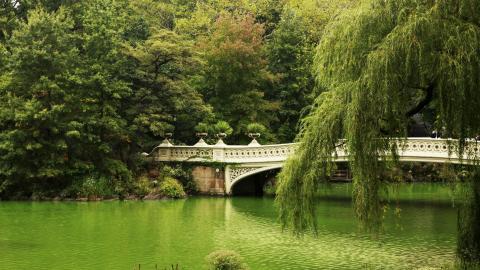Green Spaces Help You Live Longer

What’s the Latest Development?
In terms of urban landscaping, New York City’s Central Park is a major achievement. Built in 1859 to contest Europe’s monopoly on sophisticated city-living, the ample greenery of Central Park contributes to the quality of life New Yorkers have come to enjoy. In fact, “New York City now boasts the single fastest increase in life expectancy of any city in the U.S, to the point where its citizens’ average lifespan—82—now equals that of Japan.” Crucial to the park’s design was the exclusion of urban intrusion. All of its transverse roads, for example, were designed to be sunk eight feet below the surface.
What’s the Big Idea?
The connection between green space and longevity has also been established by the British Household Panel Survey which, by asking 5,000 mostly-urban households, sought to discover if all things being equal, would the same person be happier when he lived in urban areas with more greenery than in areas with less? “What they found was a clear relationship between the amount of local green space, mental distress, and life satisfaction. Specifically, the more green space, the higher the overall life satisfaction and the lower the mental distress. … Green design, it seems, isn’t just environmentally beneficial. It benefits us in far more immediate—and selfishly visible—ways.”
Photo credit: Shutterstock.com
Read it at Scientific American





